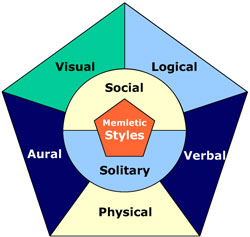9thweek reflections (Final Projects)
In
this busy week we move ahead to achieve the goals of the course. Using our
partner's comments, observations from reading peer reports, and our own
knowledge, improving your draft and write the final version of your project
report/project plan.
I
was busy in this week trying to teach my grade 11, working to finish my final
project and replay to my online class members in nicenet I have created for my
students.
Discussion: learning styles
I posted in the discussion:
Technology
has been used in so many fields in education. It can be used a lot in English
teaching for example; teaching grammar, teaching speaking and teaching writing.
Teachers use computers in presenting their lessons to their students. They also
use English laps in teaching speaking and writing. Technology varies in type
such as integration text, graphics or images, animations, computers programs,
sound, and video recorders.
Most classrooms today provide access to computers and other sources of technology. Incorporating that technology in the classroom and daily lesson plans can be a challenge for many teachers, as they must choose the most efficient means of delivering a lesson and the assignments that reinforce it while staying on target with imposed standards. However, many teachers are finding that once they incorporate technology in the classroom, it benefits their students by engaging them in ways they are familiar with and enjoy, which ultimately makes their job easier.
There are numerous ways that teachers can use technology in the classroom and many are already doing it. Some districts use interactive Smart Boards in place of traditional chalk or white boards in their classroom. These flat screen monitors are networked with the teacher's classroom computer and the school's internet connection. Interactive lessons in math, spelling, science and other subjects can be put on screen for students to participate in. The boards use touch screen technology and in some cases, kids are given handheld remote "clickers" that act as controllers for answering questions presented on screen.
Students can you blogs for example as we do now in the course. They can write reflections of their learning on their blogs and their peer's comments. The internet provides huge resources for learning and being autonomy. Many educational websites, networks, free courses and even learning chat box.
Most classrooms today provide access to computers and other sources of technology. Incorporating that technology in the classroom and daily lesson plans can be a challenge for many teachers, as they must choose the most efficient means of delivering a lesson and the assignments that reinforce it while staying on target with imposed standards. However, many teachers are finding that once they incorporate technology in the classroom, it benefits their students by engaging them in ways they are familiar with and enjoy, which ultimately makes their job easier.
There are numerous ways that teachers can use technology in the classroom and many are already doing it. Some districts use interactive Smart Boards in place of traditional chalk or white boards in their classroom. These flat screen monitors are networked with the teacher's classroom computer and the school's internet connection. Interactive lessons in math, spelling, science and other subjects can be put on screen for students to participate in. The boards use touch screen technology and in some cases, kids are given handheld remote "clickers" that act as controllers for answering questions presented on screen.
Students can you blogs for example as we do now in the course. They can write reflections of their learning on their blogs and their peer's comments. The internet provides huge resources for learning and being autonomy. Many educational websites, networks, free courses and even learning chat box.
Learning styles research has given educators new directions for making changes in their classrooms. The single most widespread change has been to open classrooms to more than one approach to intellectual work. Different social groupings, alternative activities, more complex projects have all been introduced as efforts to create opportunities for students to use their various strengths in dealing with course material. According to Terry O'Connor from Indiana State University (http://www.indstate.edu/cirt/id/pedagogies/styles/learning.html). Terry listed some general conclusions for teachers that seem to cut across the various models:
•Students will learn better when using preferences in which they're successful
•Students will be better learners when they can expand their preferences
•When teaching accommodates various preferences, more students will be successful.
•Teachers can construct activities that include specific (& multiple) learning preferences
•This can be done by adding alternatives or, completing learning cycles that incorporate all styles or, by utilizing wholistic, complex tasks.
Simulations provide excellent opportunities for teachers to create settings where students are led through critical thinking stages. When programs require problem-solving (as many games do) teachers can encourage students to try to use different "cognitive stages." This may be especially relevant if students can work on the program in teams.

No comments:
Post a Comment